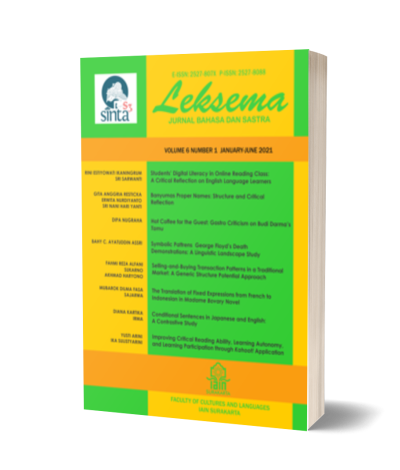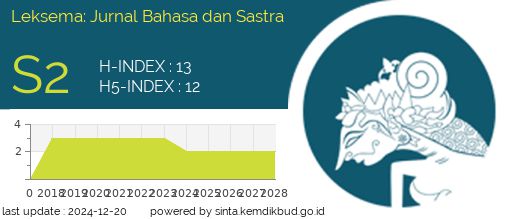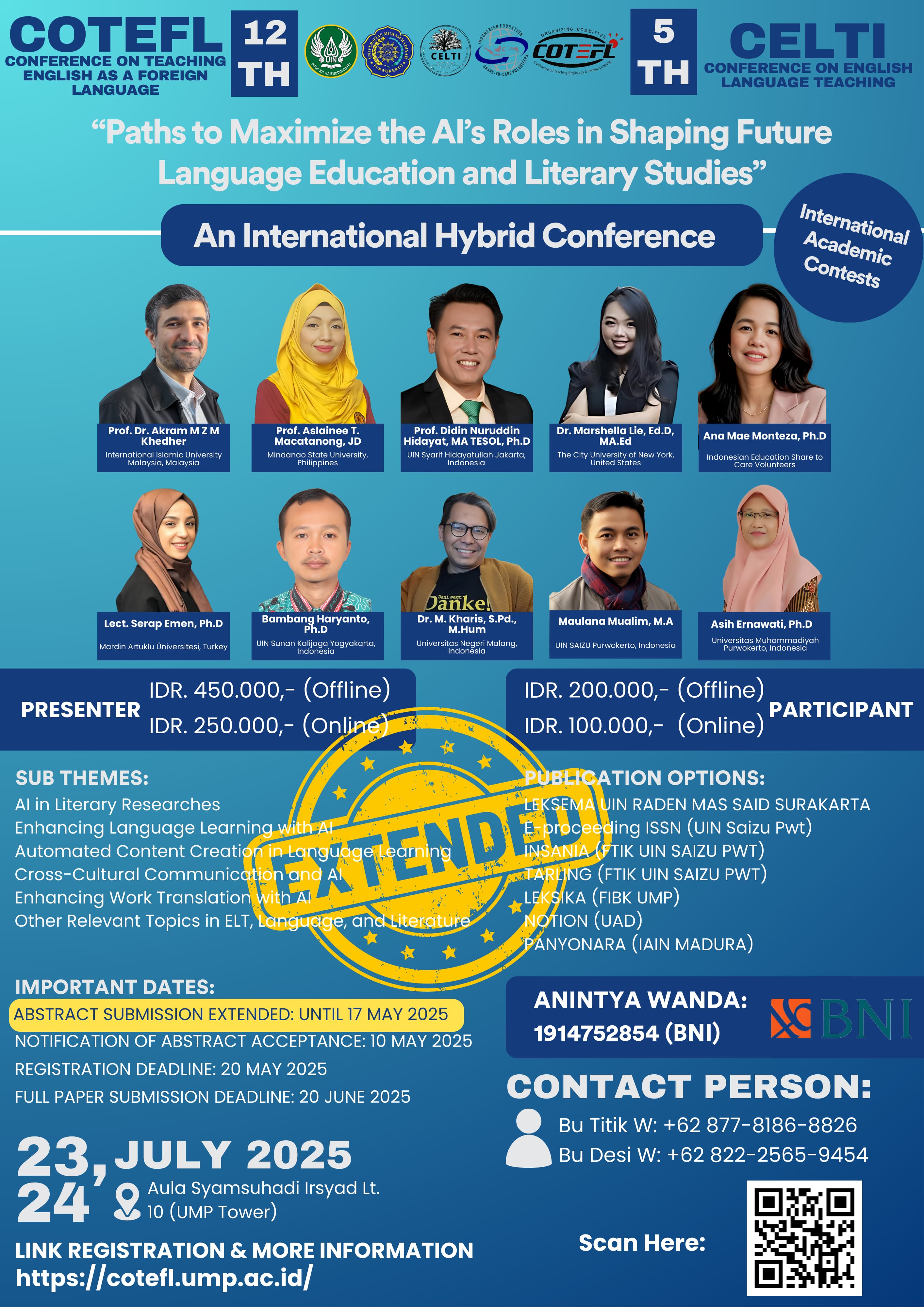READING NARRATIVE BY SEMANTIC MAPPING: A STRATEGY TO ENHANCE STUDENTS’ COMPREHENSION
DOI:
https://doi.org/10.22515/ljbs.v4i2.1785Keywords:
semantic mapping, reading comprehension.Abstract
This study attempted to investigate the effectiveness of using semantic mapping strategy for improving students’ reading comprehension skill on narrative text. This study employed a quasi-experimental design by dividing the research group into control and experimental group. In this study, a pre-test and post-test experimental design with control group was used. The instruments used to collect the data were reading comprehension tests before and after the treatment. The study was conducted at grade VIII of SMP Nurul Jadid Probolinggo at which the students were identified as having problem in comprehending English narrative text. The finding showed that semantic mapping strategy can improve students’ comprehension on reading narrative text.Downloads
References
Al-Ghazo, Abeer. 2015. “The Effect of SQ3R and Semantic Mapping Strategies on Reading Comprehension Learning among Jordanian University Studentsâ€. International Journal of English and Education, 4 (3): 92-106. <http://ijee.org/ yahoo_site_admin/assets/docs/9.19010631.pdf>
Anderson, LW & David R. Krathwohl. 2001. A Taxonomi for Learning, Teaching, and Assesing: A Revision of Bloom’s of Educational Objectives. Boston: Allyn & Bacon
Antonacci, P & CM O’Callaghan. 2011. Developing Content Area Literacy. London: SAGE Publication Ltd.
Astini, Risti. 2017. “Narrativeâ€. <https://www.englishcafe.co.id/ pengerti an-narrative-text-dalam-bahasa-inggris -beserta-contohnya/
Cooper, et al. 2009. Literacy: Helping Student Construct Meaning. Boston: Cengage Learning, Inc.
Cohen, Manion & Keith Morrison. 2007. Research Method in Education (6th ed): New York: Routledge
Creswell, John W. 2012. Planning, Conducting, and Evaluating Quantitative and Qualitative Research (4th ed). New York: Pearson Education, Inc.
Gocer, Ali. 2014. “The Assessment of Turkish Written Examination Questions Based on the Text in Accordance with the Barrett’s Taxonomyâ€. International Journal of Languages’ Education and Teaching 3: 1-16. <https://eric.ed.gov/?id=ED557158 >
Kemdikbud. 2017. Model Silabus Mata Pelajaran Sekolah Menengah Pertama/Madrasah Tsanawiyah (SMP/MTs); Mata Pelajaran Bahasa Inggris. Jakarta: Kementerian Pendidikan dan Kebudayaan
Kasim, Usman, & Sri Wahyuni. 2016. “Implementation of the Semantic Mapping Strategy for Teaching Reading Comprehensionâ€. English Education Journal, 7 (1): 46-60.
Muhtar, Kamal. 2010. Improving Students’ Reading Comprehension Through Semantic Mapping Strategy: An Action Research in the Eighth Year Students of SMPN 1 Sine in the 2009/2010 Academic Year (Master Thesis). Surakarta: Universitas Sebelas Maret
Sumadyo, Samsu. 2011. Strategi dan Teknik Pembelajaran Membaca. Yogyakarta: Graha Ilmu,
Sugiyono. 2010. Metode Penelitian Pendidikan Pendekatan Kuantitatif, Kualitatif, dan R&D. Bandung: Alfabeta
Supramaniam, Elamathi, & Zainal, Zaidah. 2014. “The Effects of Semantic Mapping on Reading Comprehensionâ€. LSP International Journal, 1: 61-74 <https://lspinternationaljournal.utm.my/index.php/lspij/article/download/12/8>
Uchida, Lala. 2012. “Allo-repetition in English Narratives: Functional Distribution and Collaboration between Storytellers and Story-recipientsâ€, Research Gate Conference Paper <https://www.researchgate.net/publication/308950965>
Wibowo, Prasetyo Adi, Dawud, & Endah Tri Priyatni. 2016. “Penggunaan Strategi PQR4 Berbantuan Peta Konsep dalam Membaca Pemahaman Teks Cerita Pendek Sesuai Gaya Kognitif Siswaâ€, Jurnal Pendidikan: Teori, Penelitian, dan Pengembangan, 1 (12); 2395-2406
Wijayantiningsih, Testiana Deni, & Dodi Mulyadi. 2012. “Penerapan Strategi Semantic Mapping untuk Meningkatkan Keterampilan Menulis Teks Report Bagi Mahasiswa Ilmu Keperawatan Unimusâ€, Seminar Hasil-hasil Penelitian-LPPM Unimus. Semarang: Unimus
Zahedi, Yagoub, & Mortaza Abdi. 2012. “The Effect of Semantic Mapping on EFL Learner’s Vocabulary Learningâ€. Procedia Social and Behavioral Sciences 69: 2273-2280
Downloads
Published
Issue
Section
License
The copyright of the received article shall be assigned to the publisher of the journal. The intended copyright includes the right to publish the article in various forms (including reprints). The journal maintains the publishing rights to published articles.
In line with the license, the authors and users (readers or other researchers) are allowed to share and adapt the material only for non-commercial purposes. In addition, the material must be given appropriate credit, provided with a link to the license, and indicated if changes were made. If authors remix, transform or build upon the material, authors must distribute their contributions under the same license as the original.






